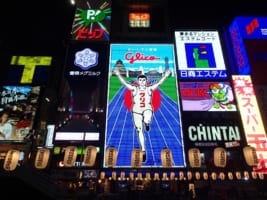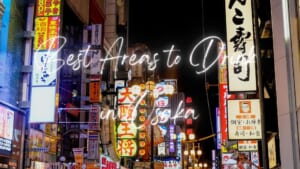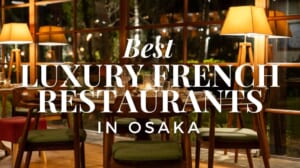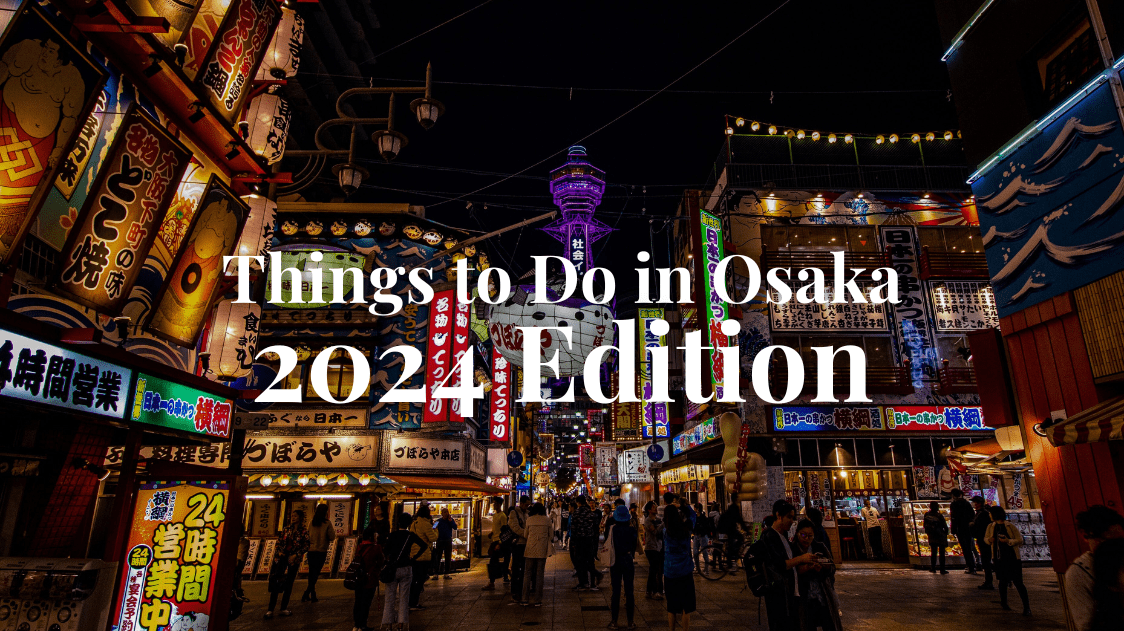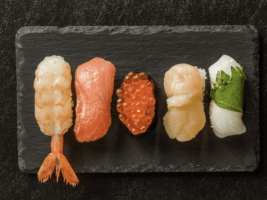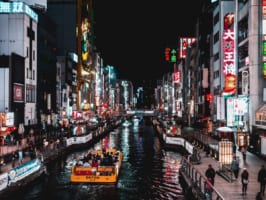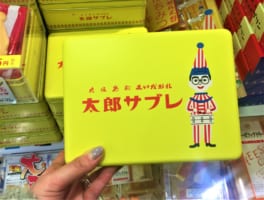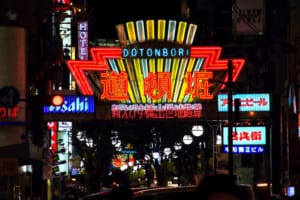5 Finest Kaiseki Restaurants in Osaka
Osaka's Gastronomic Gems: The Quintessence of Kaiseki Dining
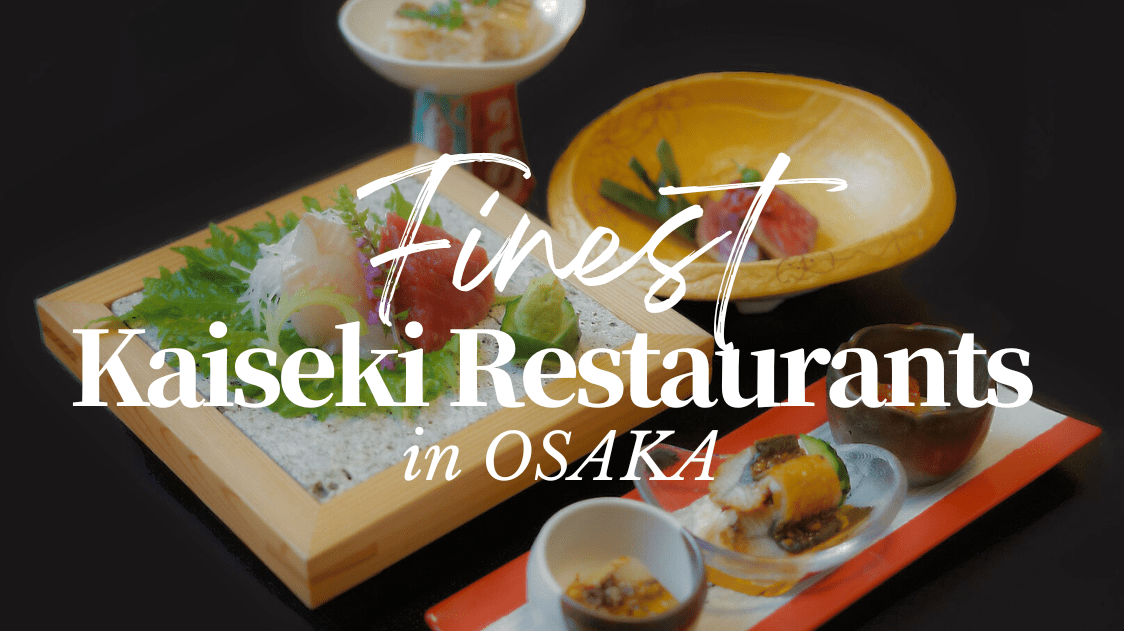
Japanese cuisine has captivated taste buds worldwide, with its sushi and ramen becoming almost synonymous with the country’s culinary identity.
However, Japan’s gastronomic tapestry is far richer than these popular dishes. One of its most esteemed culinary treasures is Kaiseki, an art form that elevates dining to a sophisticated cultural experience. This multi-course meal, deeply rooted in the aesthetics of the traditional tea ceremony, emphasizes seasonality, artful presentation, and exquisite flavors.
For those exploring Japan, especially in the vibrant city of Osaka, discovering Kaiseki is a must. It offers a unique window into the subtlety and elegance of Japanese cuisine, making it an unmissable experience for food enthusiasts and cultural explorers alike.
Here is our list of the 5 finest Kaiseki restaurants in Osaka.
*Please note that this article contains affiliate links.
What is Kaiseki Cuisine?
Kaiseki is a traditional Japanese multi-course meal, epitomizing the country’s culinary artistry. It’s deeply rooted in the aesthetics and philosophy of the tea ceremony, emphasizing seasonal ingredients, delicate flavors, and artistic presentation.
Each dish is a harmonious blend of taste, texture, and visual appeal, reflecting the natural beauty of Japan’s changing seasons. Kaiseki is important as it showcases the regional diversity and seasonal nuances of Japanese cuisine, offering a unique insight into the culture.
If you haven’t tried it yet, then you should try it for an authentic, refined culinary experience, where food transcends mere eating to become an art form, celebrating Japan’s rich gastronomic heritage.
1. Nishishinsaibashi Yuno

The first Kaiseki restaurant on our list is Nishishinsaibashi Yuno (西心斎橋ゆうの). This restaurant stands out as a Michelin-starred gem among Osaka’s kaiseki restaurants. Located in the heart of Osaka, it offers an exquisite culinary journey rooted in traditional Naniwa kaiseki cuisine.
The restaurant is renowned for its unique use of rare and traditional vegetables from various regions of Japan, including Osaka. Chef-owner Katsuyuki Yuno, who honed his skills at the prestigious Kigawa, showcases his mastery of vegetable-based dishes, creating a spectrum of flavors and textures.
The restaurant’s decor harmoniously blends Japanese tradition with modern aesthetics. It features a tea-ceremony-style design, adorned with antique art and rare tableware, contributing to an elegant dining atmosphere. The interior, crafted by sukiya architecture specialists, includes stone-wall fusuma, windows with paper inserts, and earthen walls made by a Urasenke plasterer. These elements, along with rare antiques, create a sophisticated setting ideal for adult diners seeking a refined culinary experience.
▶︎Make a reservation for Nishishinsaibashi Yuno here!
Information
 Access Access |
3 minute walk from Shinsaibashi Station (Midosuji Line, Nagahoritsurumiryokuchi Line) |
|---|---|
 Official Website Official Website |
https://yuuno-nisishinsaibashi.gorp.jp/ |
2. Shunsai Yamasaki
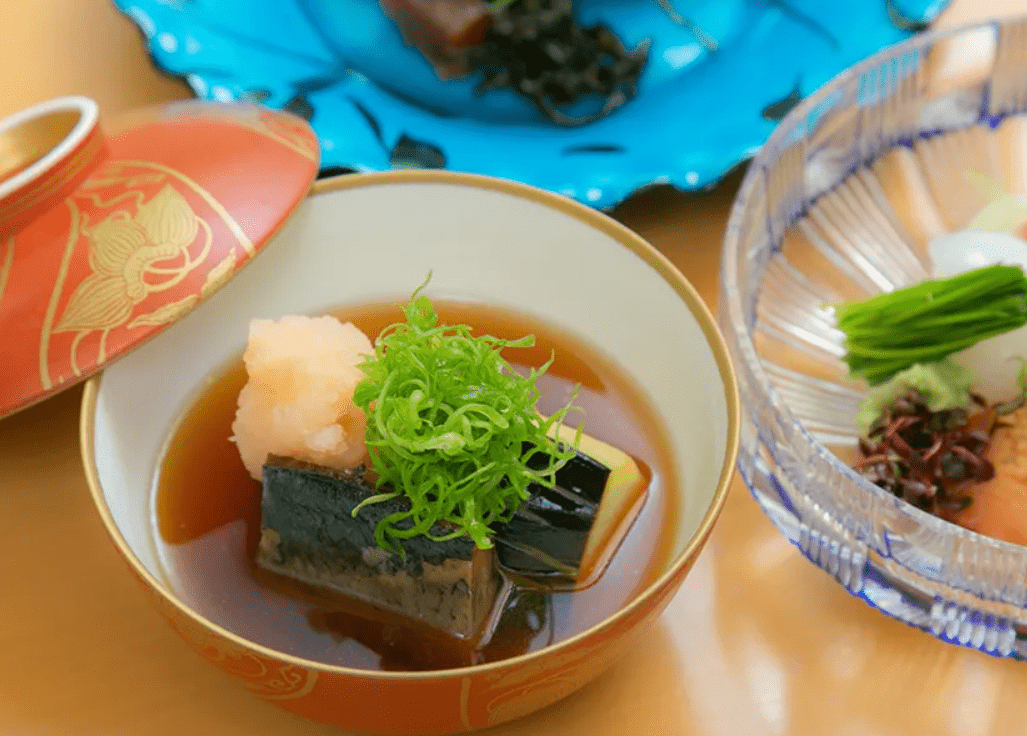
Next, we have Shunsai Yamasaki (旬菜山﨑) which is another Michelin-starred Japanese Kaiseki restaurant acclaimed for its dedication to seasonal cuisine.
Chef Hirofumi Yamasaki, influenced by his time at renowned Osaka restaurants like “Hachiko,” “Tsumugi,” and “Shien,” infuses his dishes with the essence of each season, focusing on flavors, textures, and aesthetics.
Shunsai Yamasaki’s menu changes monthly, reflecting the chef’s commitment to using local, seasonal ingredients. Each course, available for both lunch and dinner, is a testament to the chef’s skill in cooking and presentation.
The restaurant also places great importance on its tableware, changing it monthly to complement the dishes and enhance the seasonal experience. Guests can expect a dining experience that not only satisfies their taste buds but also engages all senses, offering a tranquil space to enjoy meticulously crafted Japanese cuisine. The restaurant also caters to important occasions, ensuring a memorable experience for every visitor.
▶︎Make a reservation for Shunsai Yamasaki here!
Information
 Access Access |
6 minute car (taxi) ride from Senriyama Station (Hankyu-Senri Line) |
|---|---|
 Official Website Official Website |
https://www.syunsaiyamasaki.com/taketani/ |
3. Kashiwaya
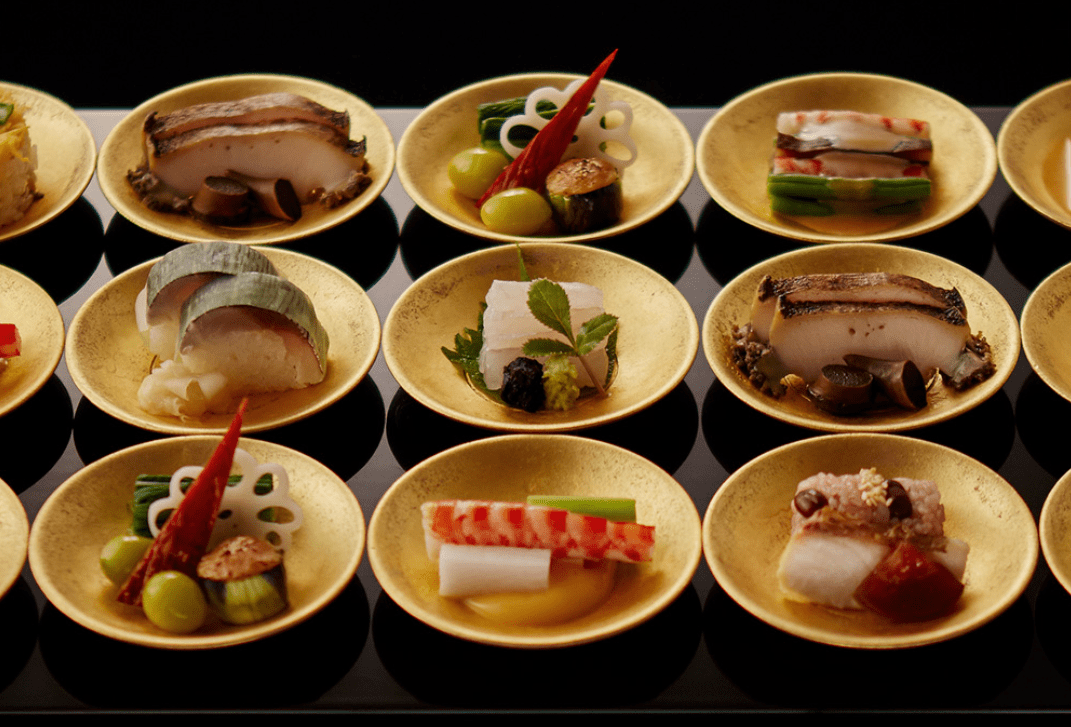
Kashiwaya (柏屋) is a celebrated three-star Michelin kaiseki restaurant, renowned for its dynamic menu and traditional Sukiya-zukuri architecture, emphasizing minimalism and harmony with nature.
Chef Hidekaki Matsuo, with a deep-rooted passion for traditional tea ceremonies, leads the kitchen with expertise honed at “Shofukuro” and his family’s restaurant, Kashiwaya. His approach blends regional revitalization and international culinary techniques, creating a unique dining experience.
The restaurant’s monthly menu showcases a tapestry of flavors, textures, and aromas, reflecting the local cuisine through the seasons. Signature dishes, like the shrimp salt grilled tilefish inspired by Hong Kong cuisine, highlight Matsuo’s innovative flair. Accommodating international diners, Kashiwaya offers English menus and services.
Designed by Sukiya architecture master Toshinori Nakamura, the restaurant features seven distinct private rooms, each adorned with Yoshioka Yukio’s dyed paper. This elegant ambiance, coupled with Matsuo’s gastronomic creations, immerses guests in a journey through Japan’s seasonal beauty, ensuring a memorable and enticing culinary experience.
▶︎Make a reservation for Kashiwaya here!
Information
 Access Access |
10 minute walk from Kandai Mae Station (Hankyu-Senri Line) |
|---|---|
 Official Website Official Website |
https://jp-kashiwaya.com/ |
4. Kigawa
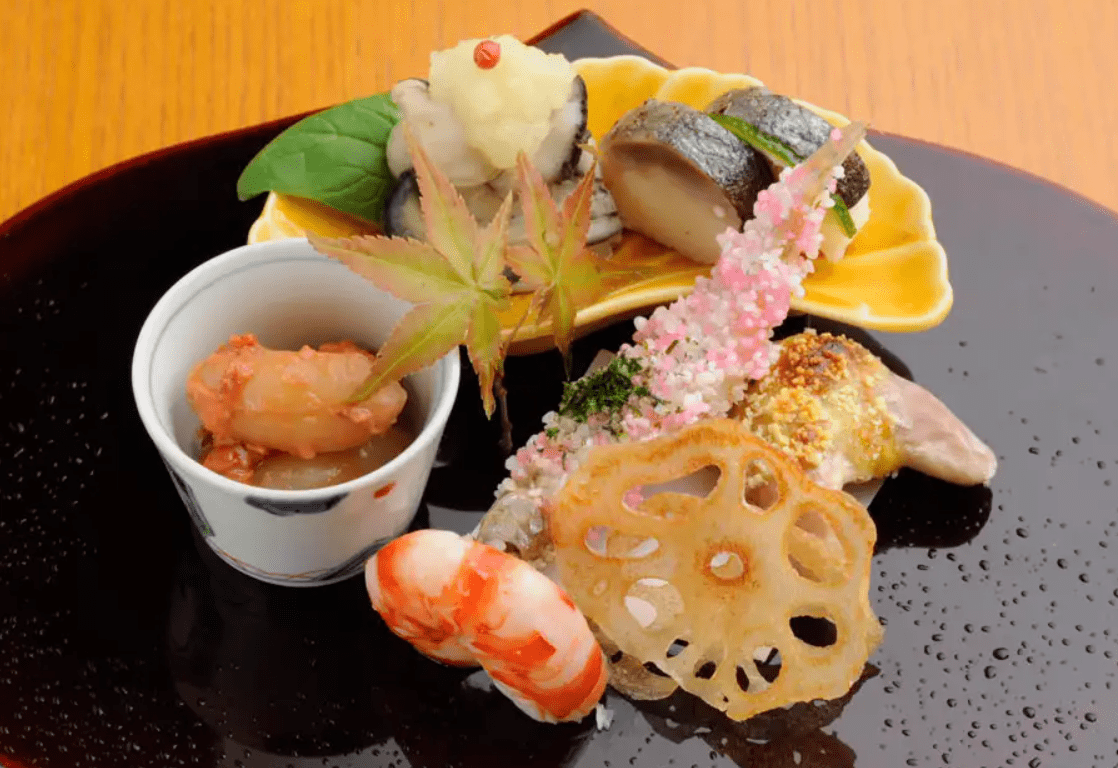
Kigawa (浪速割烹 喜川), a kappo-style restaurant near Namba Station, uniquely blends kaiseki dining with a Kyoto-style interior and izakaya warmth.
It’s a culinary haven where locals and international visitors relish some of the finest sushi. The restaurant’s fusion of Japanese and French culinary techniques elevates each dish, like the exquisitely cooked pig tongue with asparagus, to a high-class experience. Meals, crafted by Head Chef Osamu Ueno, are perfectly timed over 90 minutes, showcasing his skill in sushi and sashimi preparation.
Kappo, meaning ‘cutting and simmering,’ is central to Kigawa’s ethos. Here, guests can order a la carte dishes, witnessing Chef Ueno’s culinary artistry firsthand at the counter. The restaurant’s ambiance in Hozen-ji yokocho, a picturesque alley with cobblestone paths, adds to its charm.
Sitting at the warmly lit counter, guests enjoy the relaxed atmosphere, engaging with the chef as he prepares dishes like hot fatty tilefish and pan-seared duck, creating an intimate and memorable dining experience.
▶︎Make a reservation for Kigawa here!
Information
 Access Access |
4 minute walk from Namba Station (Midosuji Line, yotsubashi Line, Sennichimae Line) |
|---|---|
 Official Website Official Website |
https://kc9j800.gorp.jp/ |
5. Kakoiyama
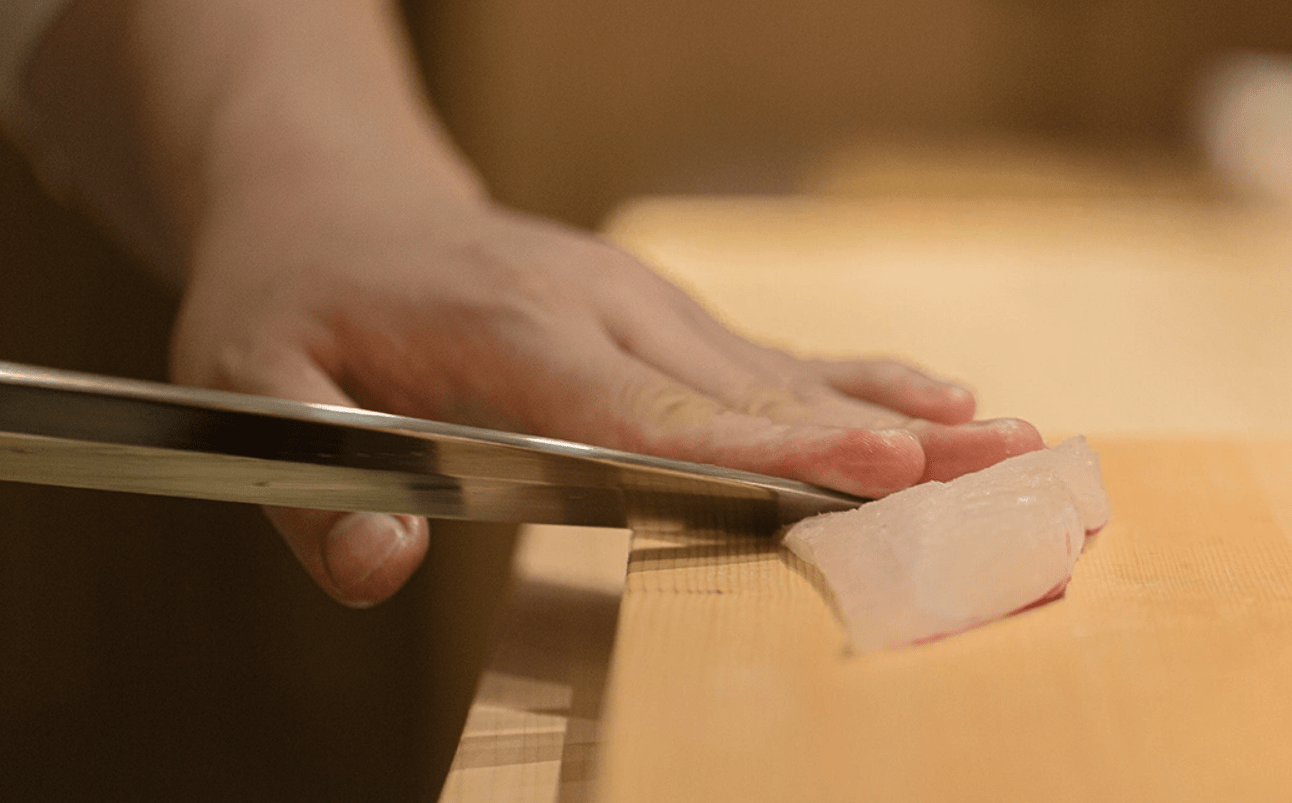
And lastly, we have Kakoiyama (日本料理 栫山) in Fushimi-cho. This is a one-star Michelin restaurant renowned for its 140-year legacy of exquisite Japanese cuisine.
Chef Kazuki Kakoiyama, at the helm, brings a rich tapestry of culinary experiences, blending traditional Japanese cooking with influences from his time at Kobe’s French restaurant “L’Essentiel.” His journey, steeped in the principles of the tea ceremony and honed across various prestigious locations, culminates in the creation of Kakoiyama in Osaka’s gourmet Funaba district.
The restaurant’s decor, inspired by traditional Sukiya-style tea houses, features a striking crimson-patterned counter, offering diners an immersive historical and cultural experience. Kakoiyama’s meticulous attention to detail extends to its tableware, enhancing the visual appeal of each dish.
Chef Kakoiyama’s cuisine is a celebration of Japanese culture’s depth and elegance, presenting a culinary journey that transcends everyday dining. This gastronomic haven offers a serene retreat for those seeking to relish life’s finer moments amidst the bustling modern world.
▶︎Make a reservation for Kakoiyama here!
Information
 Access Access |
3 minute walk from Kitahama Station (Keihan Main Line, Sakaisuji Line) |
|---|---|
 Official Website Official Website |
https://kakoiyama.jp/ |
▽Subscribe to our free news magazine!▽
For more information about food and traveling in Osaka, check these articles below, too!
▽Related Articles▽
▼Editor’s Picks▼
Written by
Born and raised in Costa Rica, I started living in Tokyo from college. I love traveling within Japan & around the world. Since I wasn’t born in Japan, I know the cultural impact that you can get when visiting Japan for the first time and what you might be worried about before your trip. And I’ve lived long enough to somewhat understand the nuances of the Japanese culture that make this country such an attractive place to visit. Hopefully I can provide to you both the information you’re looking for and the information you didn’t know you needed to know.






